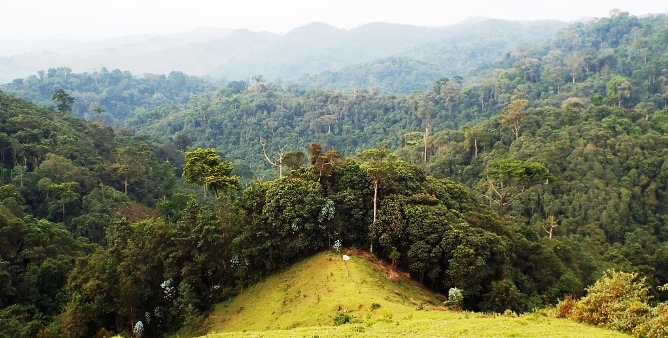By Christophe Uwizeyimana
Rwanda’s fourth national park, Gishwati Mukura is made up of two separate forests – the larger Gishwati and small Mukura, forming a total of 34 square kilometers plus a buffer zone. The history og both Gishwati and Mukura Forests date back to as far as 1970s. Between 1978 and 1986 a large portion of Gishwati forest reserve ( about 80% of reserve) was covered by forest until 1994, when Genocide against Tusti occurred and force many to leave their homes and some settled in the forest.
As a result of this issue, Refugees started to cut trees for their daily life. The forest reserve was destroyed and some animals fled. Only a small circular patch of native forest remained, 1,500 acres (6.1 km2) of the forest’s original 250,000, Then after Rwandan government in collaboration with The Gishwati Area Conservation Program (GACP) began in 2007 , both two forests started to be restored.
Since the Forest of Hope has been in place there has been a 67 percent increase in size of the Gishwati Forest. The local chimpanzee population has grown and many research and conservation initiatives have been employed within the reserve. The Gishwati Area Conservation Program began with the hopes that down the road the Rwandan government would take over the area make it a national park.The forest was designated part of Gishwati-Mukura National Park in 2015.
The forests sit on the ridge which divides the Congo and Nile water catchment areas, along the incredibly biodiverse Albertine Rift in the west of the country. It is made up of 60 species of tree, including indigenous hardwoods and bamboo.
Gishwati is home to a group of 20 chimpanzees which live alongside golden monkeys, L’Hoest’s and Blue Monkeys. Birds are well represented too, 232 species have been seen at Gishwati and 163 at Mukura, among them Albertine Rift Endemic species and forest specialists.
The park is currently part of an ambitious landscape restoration program. Activities in the park are due to begin in 2019 and include a guided nature hike, guided chimp and monkey tracking, bird watching and a visit to the waterfalls.
The area was nearly depleted largely due to resettlement, illegal mining in the mineral-rich forest and livestock farming.
The formalisation of its National Park status in 2015 aims to help redress the balance, to increase the number of trees to improve soil fertility, stabilise slopes and regulate stream flow.
It will also contribute to improving the livelihoods of the population living in the surrounding areas, which in turn offers the forest a better chance of regeneration in tandem with the potential to raise living standards in the longer term.
Community-based activities include a farm stay, a live cultural dance, making handicrafts, beekeeping, a tea plantation tour and the chance to learn from traditional healers, who use natural plants to support modern medicine and synthesised drugs.
Used materials:-RDB GuideBook-Gishwati-Mukura national Park, Dec 2017 &Archives

